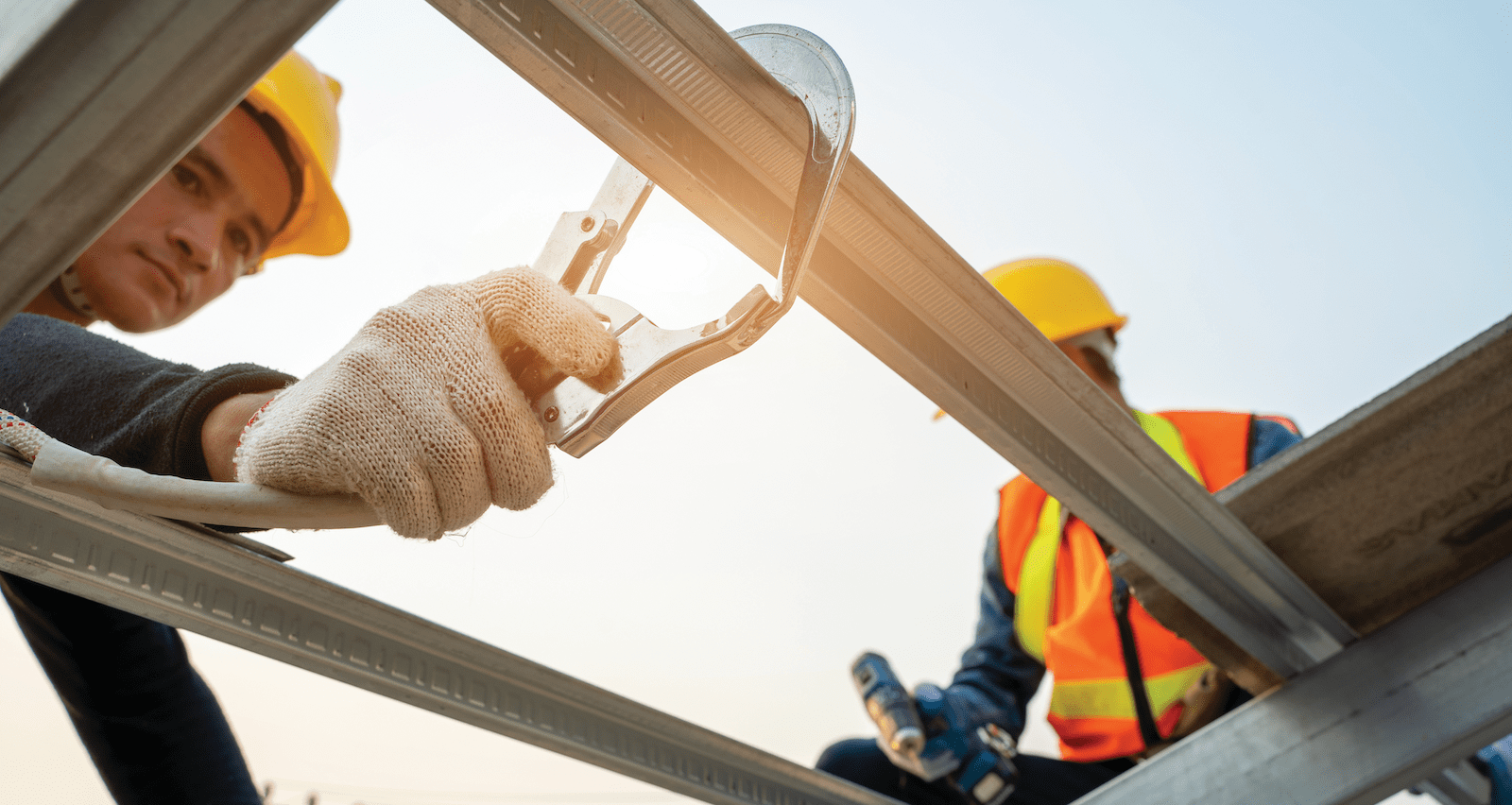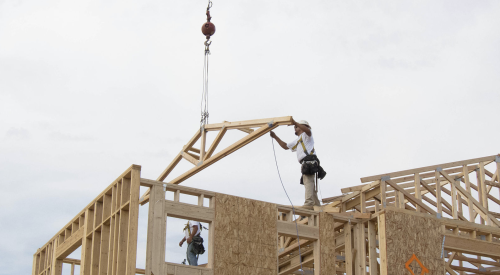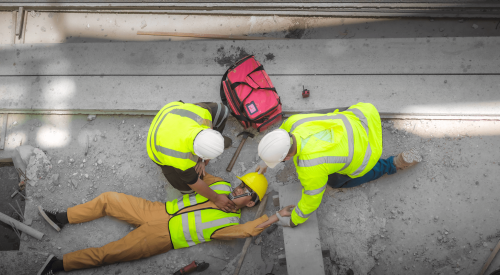Last year, members of Associated Builders and Contractors, a national trade association representing the nonunion construction industry, invested $1.6 billion in workforce education. More than half of that spending (56%) went toward safety education, a sign that construction remains a potentially dangerous job.
In fact, more than one-fifth of the 4,764 workplace fatalities in the U.S. in 2020 occurred on construction jobsites, and between 25% and 30% of those deaths were related to home building activities, according to the Bureau of Labor Statistics (BLS) and the National Association of Home Builders (NAHB).
Residential construction workers also are far more prone than their commercial counterparts to incur nonfatal injuries, such as cuts, strains, bruises, and fractures, many of which require days away from work (usually without pay) to recover.
RELATED
- Construction Worker Suicide: A Fragile Balance
- Best Practices for Safe Scaffolding on the Jobsite [VIDEO]
- Cannabis and the Jobsite: Keeping Your Risk to a Minimum
Falls, alone, account for up to 70% of construction-related injuries and deaths, according to Dr. Dong Zhao of Michigan State University, who has been analyzing BLS data to determine why construction accidents keep happening and to discover or refine preventive measures. His research found a sharp increase in poison-related asphyxia among reported incidents between 2014 and 2018, while drug and alcohol use and an aging workforce also were cited as factors causing injuries and fatalities. In addition, the research found that construction laborers, carpenters, and front-line supervisors are most vulnerable to harm.
Scott Smith, corporate director of safety management services for Selective Insurance Group, a holding company for 10 property and casualty insurers, sees it more simply. “There’s a gap in the management of risk and safety in construction,” he says.
Selective Insurance recently released the results of a 10-year study of workplace injury trends, based on 110,000 workers’ compensation claims between 2011 and 2021. In addition to reporting that slips, falls, and strains were the most commonly reported injuries in the field, at least 40% of construction worker claims were filed during the first year of employment.
That’s a telling statistic for an industry that has been suffering from a labor shortage for more than a decade and struggles to attract younger workers to its ranks ... and a recipe that often makes safety a lower priority.
More than one-fifth of the 4,764 workplace fatalities in the U.S. in 2020 occurred on construction jobsites. Between 25% and 30% of those deaths were related to home building activities.
“It often doesn’t get the attention it deserves until there’s a mishap,” says J. Gary Hill, executive director of the Job-Site Safety Institute (JSI) based in Raleigh, N.C. But lax safety practices can have serious and costly consequences: fines levied by the Occupational Safety and Health Administration (OSHA), higher insurance premiums, project delays, and reputational damage, to say nothing of workers’ lost time due to injury.
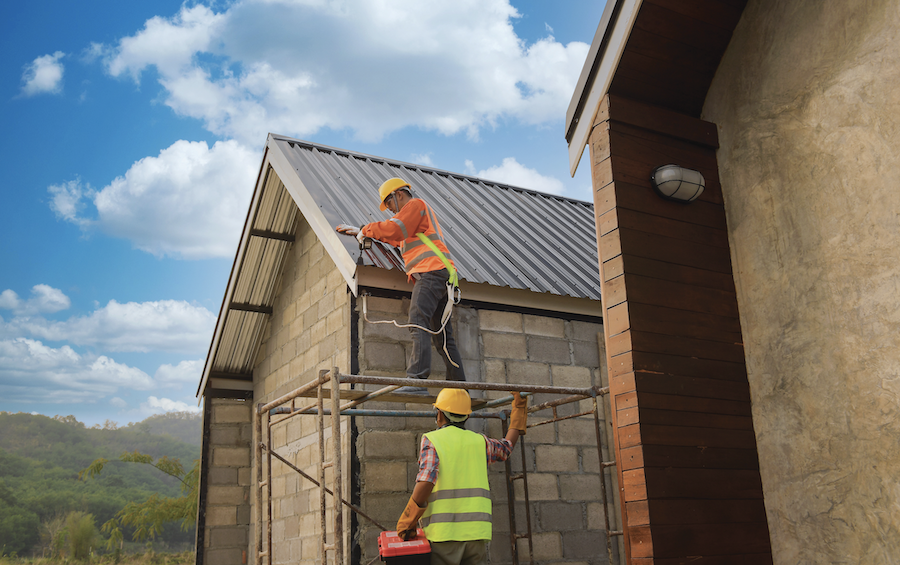
SFI Compliance, which provides third-party inspection services to more than 40 home builders in its home state of Colorado, as well as in Arizona, Florida, and Texas states that “core elements” of an effective jobsite safety project should incorporate management leadership, worker participation, hazard identification and assessment, education and training, and program evaluation and implementation.
The keys to an effective program are “education, communication, and continuous improvement,” says Rob Matuga, NAHB’s assistant VP of labor, safety, and health policy, which has a wealth of safety-related advice available to builders and contractors—members and nonmembers—on its website.
Owning Safety: Taking Construction Jobsite Safety Beyond Compliance Checklists
“Be Prepared” may be the motto of the Boy Scouts of America, but it’s also a good mantra for builders when it comes to jobsite safety.
On every one of its jobsites, Red Tree Builders, in Asheville, N.C., installs an accessible metal box that contains its safety manual, an emergency action plan with the address of the jobsite and addresses and phone numbers of the nearest urgent care center and hospital, a first-aid kit and eyewash station, plus extra protective equipment.
Conscientious builders and consultants also insist jobsite safety needs to go beyond a simple compliance checklist. “The goal is to keep safety in front of people all of the time, and someone in the company has to ‘own’ that responsibility,” says Ron Stafford, senior quality assurance manager for Thrive Home Builders, in Denver.
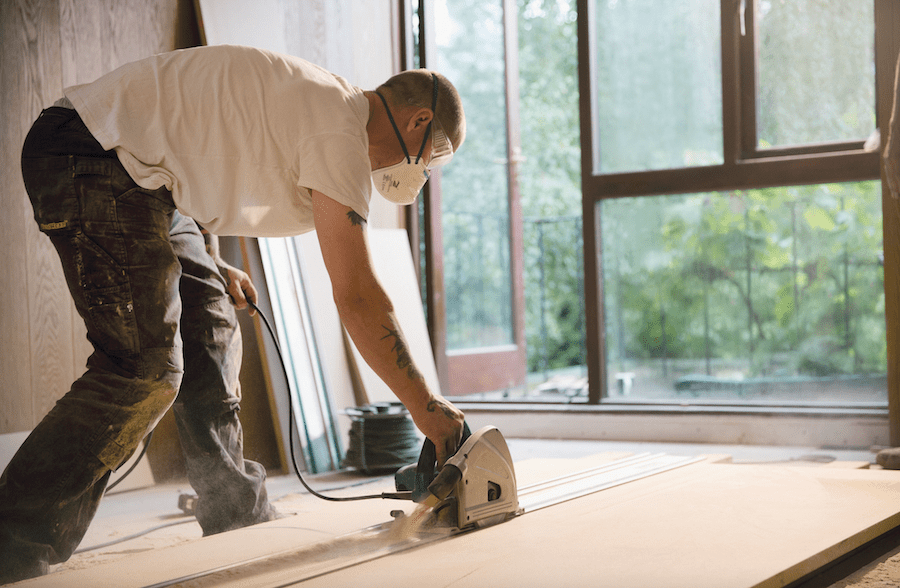
In addition to requiring all of its on-site construction managers to earn OSHA 30-hour certifications, the builder works with SFI and OSHA to constantly refine its training programs—an effort that appears to be paying off: Thrive earned a composite grade of 94.6% across 36 separate and independent jobsite safety inspections by SFI conducted between January and March of this year.
All 106 hazards SFI identified during that time—mostly related to safe access and egress, adequate guardrails, and proper use of personal protection equipment (PPE)—were abated either on the spot (such as a roof framer getting properly tied off) or within a day or two. The builder also hasn’t suffered any jobsite injuries among its on-site personnel. “Our job is to get them home safe,” Stafford says.
“There’s a gap in the management of risk and safety in construction.”
—Scott Smith, Selective Insurance Group
Worker buy-in is essential to any safety program’s success. Last year, Troy Cornett was named safety manager for Buchanan Construction, a custom builder in Asheville, N.C., and was the 2020 single-family recipient of the NAHB/Builders Mutual Safety Award for Excellence (SAFE), which recognizes successful advancements in safety. Cornett spent his first three weeks in the field introducing himself to workers and trade contractors, asking questions about procedures and making sure Buchanan’s safety policies were being executed and monitored by the company’s field team, which includes 11 construction managers. To get Buchanan employees more involved, Cornett hands out safety cards workers can complete and submit anonymously if they see possible safety violations.
But what about holding subcontractors accountable for safety on your jobsites? While most builders expect trade partners to train their crews about job-specific safety, taking initiative and responsibility for those workers is imperative. Simply, liability for injuries and fatalities extends to the builder under OSHA’s Multi-Employer Citation Policy, notes Edwin G. Foulke Jr., a former assistant secretary of labor for OSHA at the Department of Labor who is an attorney with Fisher & Phillips, in Atlanta.
Because of this liability, Foulke advises builders to have “really good agreements” with their trade partners that spell out in specific detail that they will follow OSHA regulations, wear fall protection gear, and promise not to subcontract (or “sub-sub”) any work within their scope without the builder’s approval.
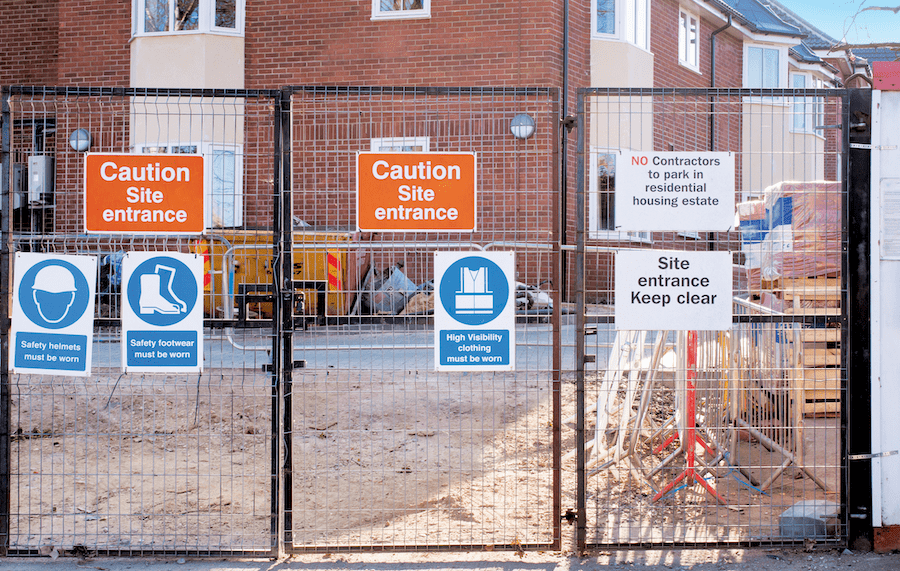
To wit, safety- and business-minded builders such as True Homes, in North Carolina, and Boulder Creek Neighborhoods, in Colorado, require trade contractors to sign agreements stipulating that they understand and will comply with the builder’s jobsite safety policies. And some of Thrive’s trade partners commission similar safety inspections, reporting, and training from SFI.
True Homes’ 100 field superintendents also submit weekly safety logs that are sent to its trades to let them know when they’ve screwed up, but also when their workers meet or exceed safety expectations. With that, they document inspections, compliance rates, and safety violations with an eye toward program improvement.
“You can’t put safety on cruise control, and we need to hold ourselves accountable administratively,” says True Homes’ executive partner Scott Wentz. To which Kyle Ellis, Boulder Creek’s director of construction, adds, “The trick is repetition. We’re here to make sure our workers have the right tools to be safe.”
Jobsite Safety Checklist
• Have and maintain a written safety manual and emergency action plan at every jobsite
• Build and maintain a first aid kit at every jobsite
• Certify project managers as safety experts
• Make safety the No. 1 priority in field worker training
• Provide the proper safety gear and tools, with training
• Monitor and measure safety procedures
• Commission and conduct safety walkthroughs
• Encourage and enable repetition of safe practices
• Request OSHA pre-inspections for every new jobsite
• Engage field workers, including subs and suppliers, to point out safety violations and suggest policy improvements
• Hold subs and suppliers accountable for their workers, even though the liability remains with you
• Document and measure the results of safety inspections, compliance rates, accidents and injuries, and policy and procedural violations toward program improvement
• Be willing to shut down a job for safety violations
• Take advantage of industry and regulatory resources and new technologies to create a comprehensive safety program that also addresses heat stress and mental health
Uphill Battle to Stick to and Enforce Jobsite Safety Policies
As often as not, OSHA’s “fatal four” causes—falls, electrical exposure, being struck by objects, or caught in-between, as well as nonfatal accidents and body strains resulting from complacency, distractions, fatigue, and recklessness—suggest shortcomings in safety training and enforcement.
John Koenig, a building performance specialist with Pittsburgh-based IBACOS, which partners with builders nationwide to assess construction quality and processes, including safety, says it’s not uncommon to see workers who aren’t properly tethered placing roof trusses or being exposed to silica dust when they’re cutting expansion joists or mixing mortar without masks. “These guys think they’re invincible,” he says.
With that, Koenig adds, jobsites will tighten up to pass anticipated or scheduled safety inspections and then go back to their old ways. He has also observed builders who clear the site ahead of a safety audit to avoid violations. “I’ve been on jobsites where I’ve asked, ‘Where is everyone?’”
Jeff Eschliman, VP of operations for Irvine, Calif.-based Tri Pointe Homes, which builds in 11 markets nationwide, suggests that safety is only effective if other builders in a given area agree on compliance parameters and enforcement; otherwise, he says, workers and trade partners simply jump to another builder that has less-stringent safety regimens, further complicating skilled labor shortages and production delays.
“You can’t put safety on cruise control.”
—Scott Wentz, True Homes
Patricia Urtecho, a senior risk management consultant with Builders Mutual Insurance Co., says construction workers’ resistance to safety measures stems from their broader aversion to being told how to do their jobs. “Contractors don’t like it when their expertise and experience are challenged by safety mandates,” she says.
Jobsite injuries and deaths continue to occur, Urtecho points out, because some builders don’t want to be “bothered” by safety, and immigrant workers often come from countries where “compliance is a foreign language.” She also thinks some workers have a hard time applying their training to specific tasks or aren’t familiar with certain PPE options.
Safety training hinges on a builder’s willingness to stick to and enforce its policies, even if that means temporarily halting production. Jeff Palumbo, safety and environmental director for Shea Homes’ Colorado division, recalls being on a jobsite a few years ago when roofers working on a Saturday, without supervision, weren’t tying down to protect against falls. He stopped the job, addressed the situation immediately, and required the workers to submit retraining verification before they were allowed back onto the jobsite.
Even so, Palumbo admits his company usually gives its trade partners the benefit of the doubt when it comes to safety compliance, though any observed or documented willful neglect of the builder’s standards may escalate to sit-down meetings, probation, and, as a last resort, termination.
Urtecho points to another roofing contractor whose discipline for noncompliant subcontractors starts with writing them up, then fining them, but returning that money at the end of the year if the sub’s performance demonstrably improves. SFI also endorses positive reinforcement when its jobsite inspections show examples of safe work practices, says managing partner Dan Johnson.
Abundant Resources for Jobsite Safety Training and Guidance
JSI’s Hill thinks smaller builders lacking manpower or dollars struggle with jobsite safety consistency. But it’s not like any builder is bereft of resources for safety training and guidance.
For instance, NAHB’s video toolbox series has expanded to include 26 topics, Matuga says. Builders Mutual’s website features blogs that highlight safety instruction apps for scaffolding, ladders, electrical, back care, respiratory protection, trenches, and guardrails, among a range of other topics. OSHA’s website includes a “hazards and solutions” page with links specific to residential construction tools and practices. OSHA also will pre-inspect a builder’s jobsite, without the threat of citation or fine, to point out hazards and possible violations.
Then there are private efforts to spread the safety gospel, some initiated by home builders for other builders. In Tri Pointe’s Phoenix operations, the cornerstone of the builder’s safety program includes collaborating with trade contractors and fellow builders through the Home Builders Association (HBA) of Central Arizona, with the goal to not only improve jobsite safety overall but to also stem the flow of workers migrating from one jobsite to another that is less stringent.
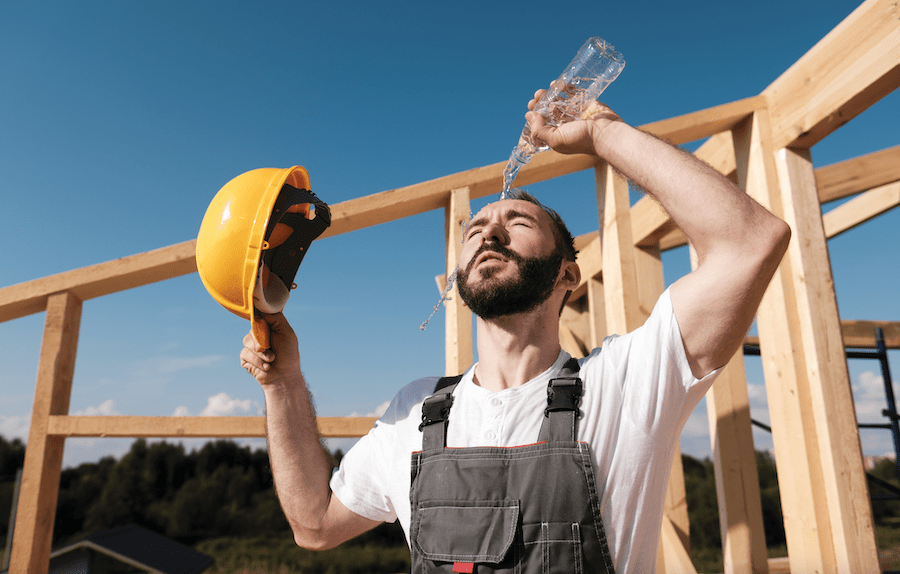
So far, more than a half-dozen builders and 10 of the area’s largest trade contractors have rallied around the Phoenix Job Conduct (PJC), a set of best practices that, in some cases, goes beyond OSHA recommendations and regulations, Eschliman says.
To reinforce team accountability, contractors who sign onto the PJC are issued an ID sticker for their hardhats. Every 60 days, each participating builder conducts a safety walkthrough of another participant’s jobsite. The HBA’s safety committee, of which Tri Pointe is a member, also hosts monthly training and awareness meetings, and will have jobsite “stand downs” at different times of year for topics such as working in extreme heat.
These efforts are in addition to the daily safety “observations” by Tri Pointe’s 50 project managers and superintendents who Eschliman says are trained to identify violations and conduct interventions.
This spring, Shea Homes Colorado was wrapping up the requirements for its eighth consecutive Master Builder designation. To achieve Level 3 status, Shea’s employees participate in the Home Builders Association of Metro Denver’s HomeSafe Colorado safety orientation training program, and OSHA’s Focus Four training and Construction Safety Course. Shea also submits its jobsites to three OSHA inspections.
Using Technology for Digital Documentation and Implementation of Safety Programs
Builders are also relying more on technology providers to help support the implementation of safety programs. For example, Eyrus workforce management and safety software offers data-capture analysis, real-time notifications, and trackable attributes to ensure safety protocols. Its services include an interactive evacuation report that texts workers on site in the event of an emergency, such as an impending tornado.
Eyrus’ CEO and co-founder Alexandra McManus says her company’s platform also can be set up to issue “fatigue alerts” based on a worker’s health profile, and will soon be able to match specific jobsite tasks with a worker’s on-site location.
Vancouver, B.C.-based Salus is a safety platform that helps builders map their workflow to create safety “as a community,” says Salus founder and CEO Gabe Guetta, who began his career as a contractor. Construction safety software, he adds, can improve a builder’s identification and management of hazards and can provide cloud-accessible compliance evidence and accountability. “It’s about moving the needle and getting contractors of different sizes and sophistication on the same plane,” Guetta says.
